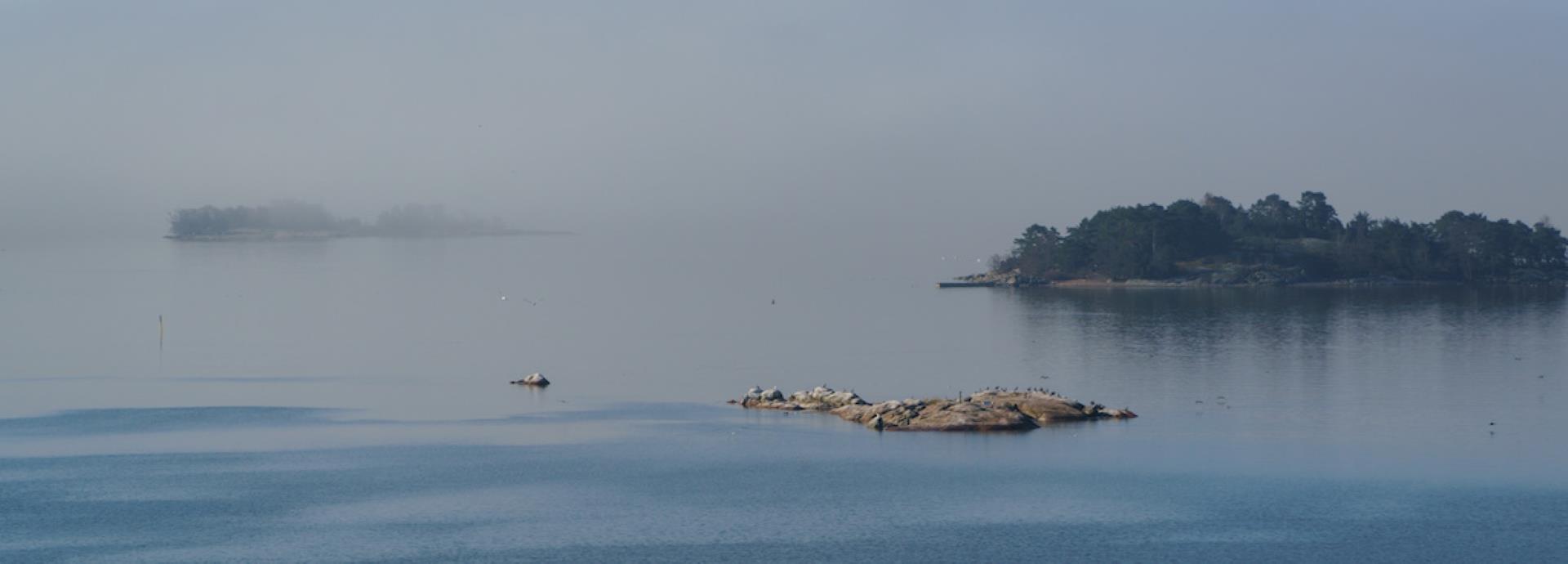

In the early hours of 11 November 1916, the German torpedo boat S59 struck a Russian mine and sank in the Baltic Sea. There it lay, almost undisturbed, until about a hundred years later the wreck was identified by the Badewanne diving team lying half-embedded in the sea floor.
“Badewanne documents historical shipwrecks,” explains member Juha Flinkman. “What many people may not be aware of is the environmental threat of these wrecks. They sank with oil in their bunker tanks and rust never sleeps. Over time they may begin to release oil.”
Flinkman is one of the volunteer divers of Badewanne, but his day job is that of a Development Manager for research vessels at Finnish Environment Institute SYKE’s Marine Research Centre. As a marine scientist he is concerned about marine pollution.
“The oil they used had much higher sulphur content than today, and in World War II Germany used synthetic oil produced from coal which was even worse,” Flinkman continues. “These are much more environmentally damaging than modern fuel.”
The Badewanne team would like to place sensors next to wrecks to measure the environment, such as temperatures, salinity, turbidity and currents. Later, the idea came that divers could place hydrocarbon sensors on the wrecks to measure any harmful releases of oil. The Wärtsilä Project Baseline team will take up the task.
“This is an example of citizen science: the monitoring, reporting and understanding how humans impact the environment,” explains Mauro Sacchi, Director, Business Development at Wärtsilä. “These are regular people volunteering their time but working closely with authorities and experts.”
Citizen science
Sacchi is an expert diver himself and volunteers with other Wärtsilian divers. They are involved with Project AWARE, a global movement that organises events to clean up marine litter, and Project Baseline, a citizen science project to document human activity on aquatic environments.
“We began placing sensors in Finnish inland waterways to learn how to safely place sensors and collect data, but are now planning to expand to the Baltic,” says Sacchi. “We select sites affected by human activity and collect data. This data is uploaded to the Project Baseline website where it is used by researchers.”
Their future ambition isn’t limited to old wrecks discovered by Badewanne; stations can be placed in a variety of locations for a variety of reasons, such as measuring agricultural runoff or even the level of microplastics in the water.
“It is not easy to install these sensors. You might be working in deep, pitch black water,” says Mikko Gustafsson, Chief Project Engineer at Wärtsilä. “Flinkman and the Badewanne divers give us guidance. They explain where sensors should be placed to get meaningful data, but most importantly they explain how to do it safely. Wärtsilä strongly supports our work.”
Working from the Aranda
Much of the maritime research in the Gulf of Finland is conducted from the R/V Aranda, SYKE’s research vessel built by Wärtsilä in 1989. The thirty-year-old ship was due for a refit, which was completed in 2018.
“It was a major overhaul,” says Flinkman. “The ship was cut in two and a new section was added in the middle which contains new laboratory and research space. We also have a new instrumentation keel for hydroacoustic instruments like echo sounders. This keel can be lowered and raised to work in quiet, undisturbed waters.”
A key to working in quiet waters is the propulsion system. Batteries were installed so the Aranda can run silently while collecting hydroacoustic data. As a bonus, the batteries can give an extra boost to push through pack ice.
The Wärtsilä team comprising Gustafsson (Chief Project Engineer), Andrei Voinigescu (General Manager, Business Intelligence) and Sacchi will join a mission on the Aranda with Flinkman in August 2019 to learn how environmental monitoring activities are conducted and how citizen science can support authorities.
Business and science partnership
And there is more coming. R/V Aranda, Wärtsilä and other key partners are in discussion to use the vessel as an important lab and source of knowledge on how marine technology impacts the environment and could further improve our move towards ambitious 2050 emission targets.
“These issues are close to my heart, so I speak passionately about them,” Flinkman says. “In order to meet our challenges, we need partnerships between marine scientists and businesses. We, scientists have a good path of cooperation with Wärtsilä and I’m sure it will be beneficial not just to both parties, but also to people who are concerned with our maritime environment.”
Did you like this? Subscribe to Insights updates!
Once every six weeks, you will get the top picks – the latest and the greatest pieces – from this Insights channel by email.

